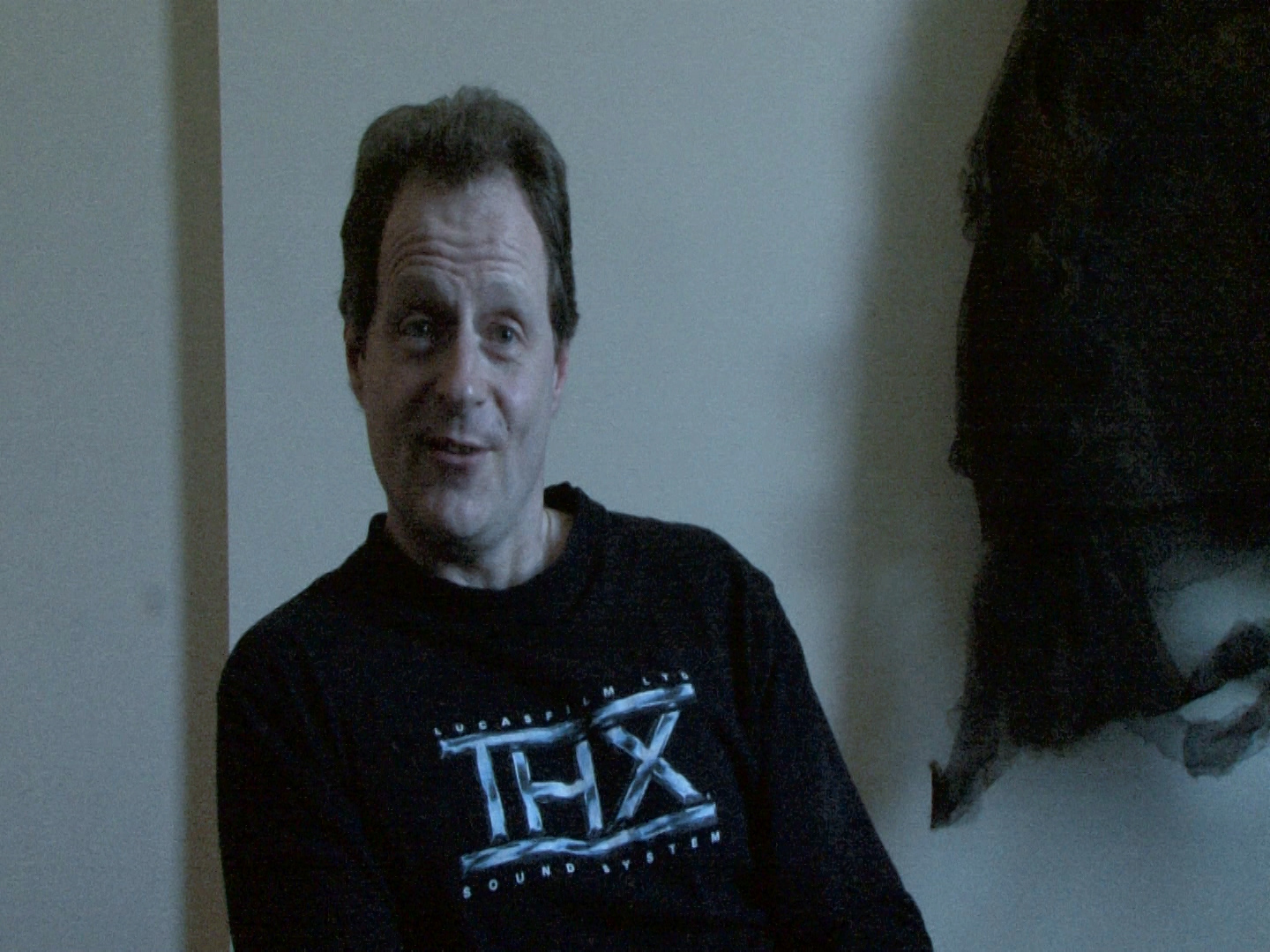Question 1
The soundscape is somewhat cheesy. Along with the singing and gentle instruments, there are sounds of birds and nature loudly layered over it. It sounds seems to be repeated, so it may be a stock sound of ‘birds.’ otherwise they may have recorded a short bird sound and repeated it. The sound effects then pick up with chimes and whooshes enhancing what we see. Chimes and whirls support the whirling transition between scenes. Dahlia then throws her scarf up out of the car with a dramatic whoosh. The music is then abruptly stopped with the journalist’s voice, to which the visual scene disintegrates as the cheesy fantasy is broken. There are still stock sound effects though; such as cash register noises. When the book reappears, the chimes are heard once again, illustrating that it is fantasy. Whenever the journalist disproves something said in ‘Forbidden Love,’ a more jarring sound effect is used such as a rattle or a camera shutter sound. These, again, sound to be stock sounds sourced externally, and were layered over the interviews once the other editing had been completed. The whole piece is edited in a way where the interviews audio continues over the visual edits. This allows the transitions to flow better and tie into each other.
Question 2
Cmd+G, Grouping. It is irritating trying to move nicely edited finished sequences around without messing anything up, so I assume that’s what the grouping tool is for. I’ve never used it before but I imagine it makes it much easier to keep edit specific sequences and not have them become messed up when trying to move them.
Left, Step Backward. This sounds like a much faster way to undo something. it’s just one key. Definitely useful to save thought and energy.
Cmd+ Left/ Right, move selected clip by one frame. Moving the clip frame by frame, invaluable for fine editing and perfecting/ polishing.
Opt+ Left/ Right, trimming the clip by one frame. Similarly to Cmd + Left/ Right, this is good for fine editing.
Question 3
The sound in this piece informs the images. For example when the sound tempo and tone picks up at around 4:30, the tone of the piece seem completely different and the people’s live seem to be faster and more exciting that before the music change. This illustrates how important sound can be and the careful placement and choice of sound and music.
The camera work focuses on movement and obstruction. It films random people as a fly on the wall, it doesn’t matter who the individual is. There are shots of feet or people moving or walking obstructed by cars and architecture. Trucks will drive in the way of the shot, and people will turn away from the camera and we see their backs. It is illustrative of just everyday people who you have no connection to, but they are just around. The camerawork and editing reflect this well. The edits being just short enough for one character not to receive too much spotlight or interest. They are shown for just as long as if you were just glancing at them on the street.
Question 4
“Its often incredibly painful for people to talk about some of what they’ve experienced, and yet they have made some kind of choice to let themselves be filmed. In that arrangement of trust, i think there’s a space for human attention.” I really like this Kirsten Johnson quote from the Cunningham reading. I’ve had concerns through filming that maybe the participants are feeling uncomfortable or that I’m making them awkward or asking them too much. Then i try to think of ways to compensate and become super friendly and talkative after the interview. But i guess there is some mutual trust there. Everyone i have interviewed has been happy to answer all of my questions and sign over the release forms, and they know that f they don’t want to answer something they don’t have to. So perhaps they don’t feel uncomfortable at all. This is probably helped as although i cant talk during the take, all the people I’ve interviewed so far have had genuinely interesting things to say. It feels more like a conversation, at least on my end. I think in this documentary and in future ones i can push people a little. carefully, of course. Particularly with the Catholic groups, whom might be sensitive about me comparing their religion to an AFL team. But as long as there is tact, people seem willing to share a lot. I guess people just enjoy talking about themselves and their interests.
“I love when that happens in film, when you have some kind of physical embodiment of the persons inner state.” This is another quote that i like, which was actually bold and enlarged in the article. and for good reason too. The thing about effective films is they use their visual medium to their advantage. Rather than exposition, it is more effective to show rather than to tell. Inner emotions are difficult to express in this way, so its important to look for opportunities to capture this.
Cunningham, Megan. The art of the documentary : ten conversations with leading directors, cinematographers, editors, and producers, (p. 88-89, 149-175, 277, 284). Berkeley, CA : New Riders, 2005.




